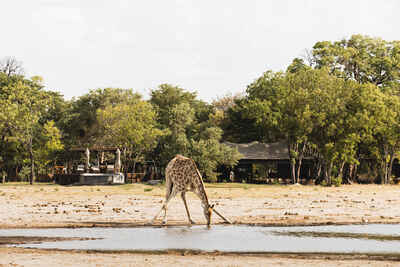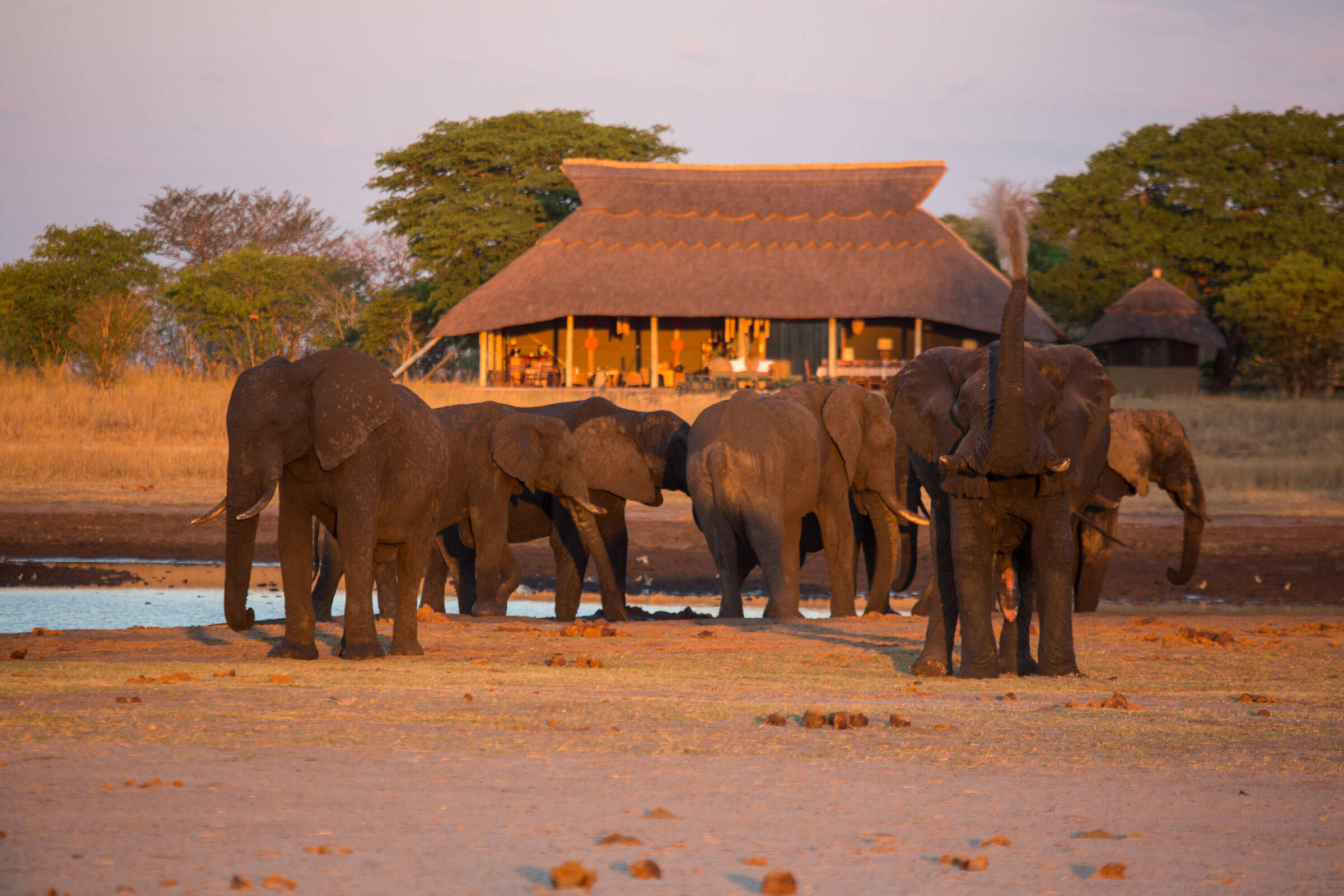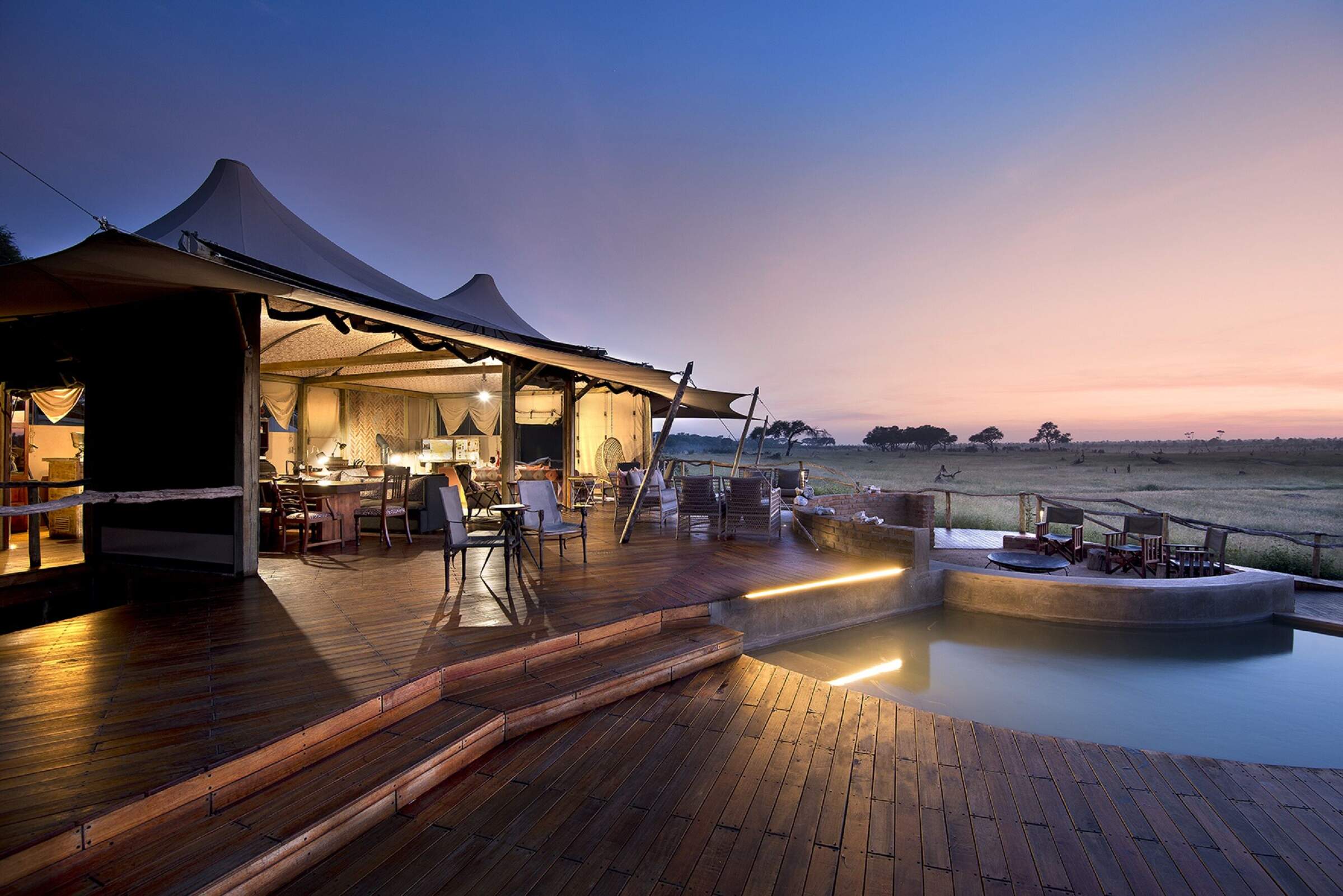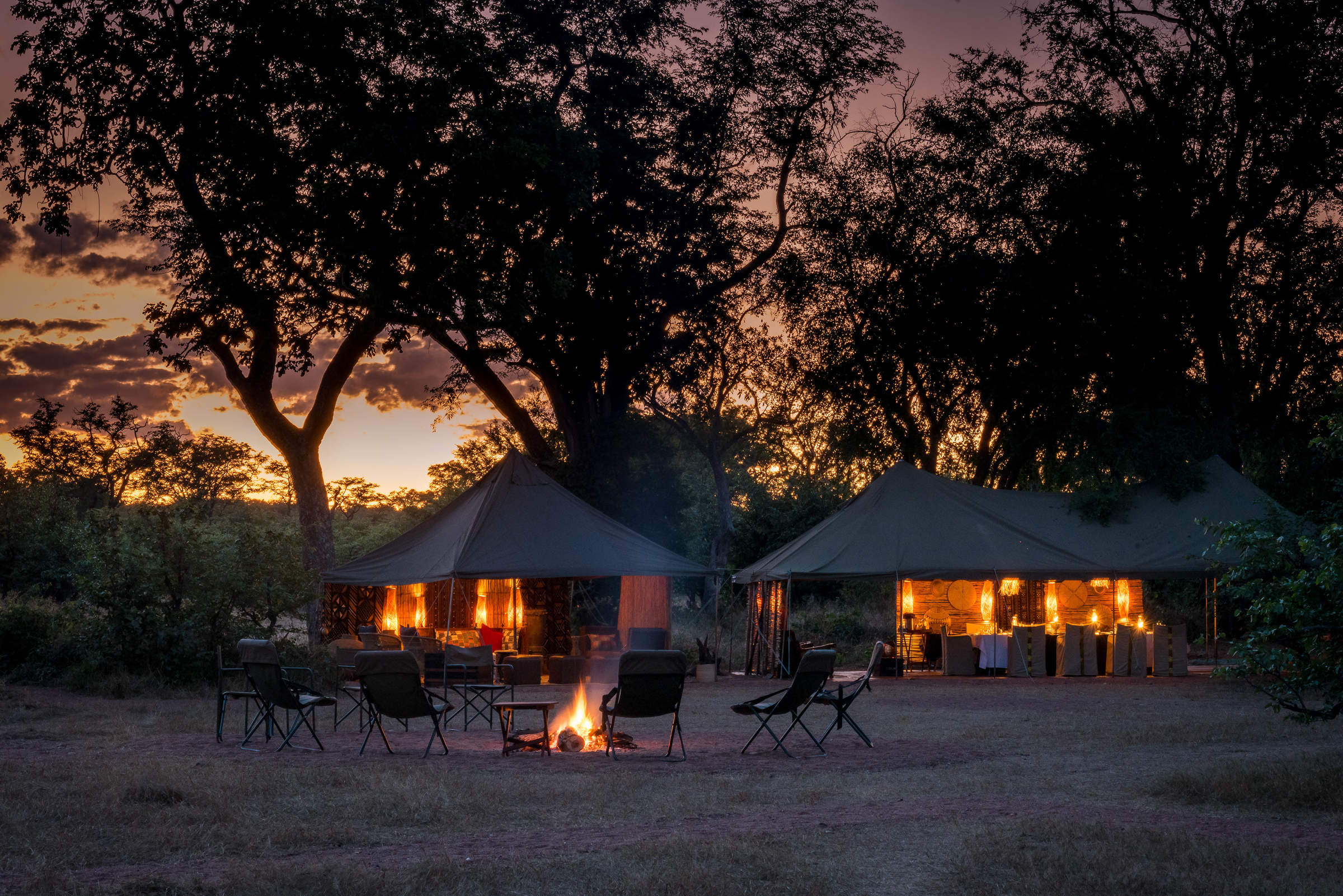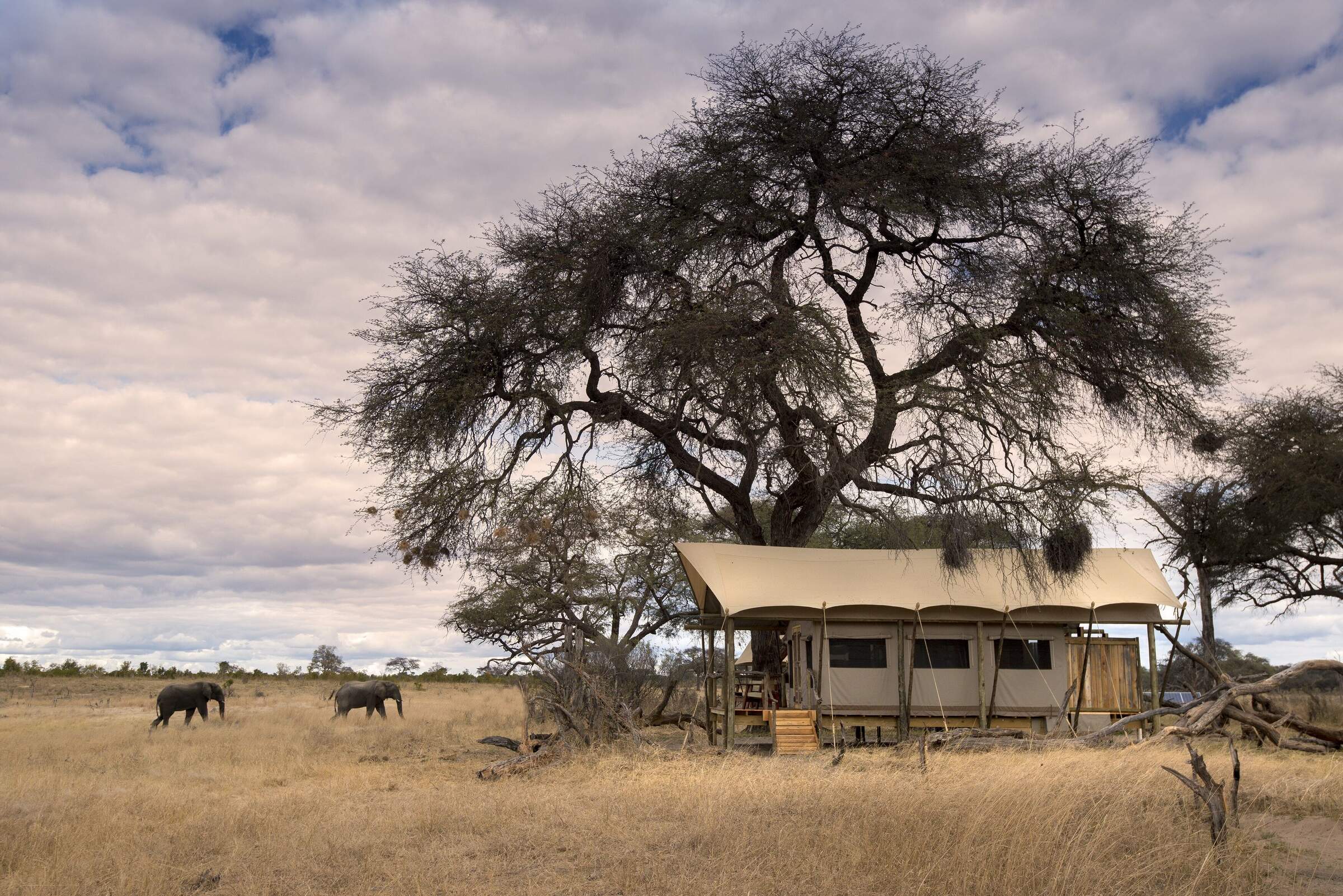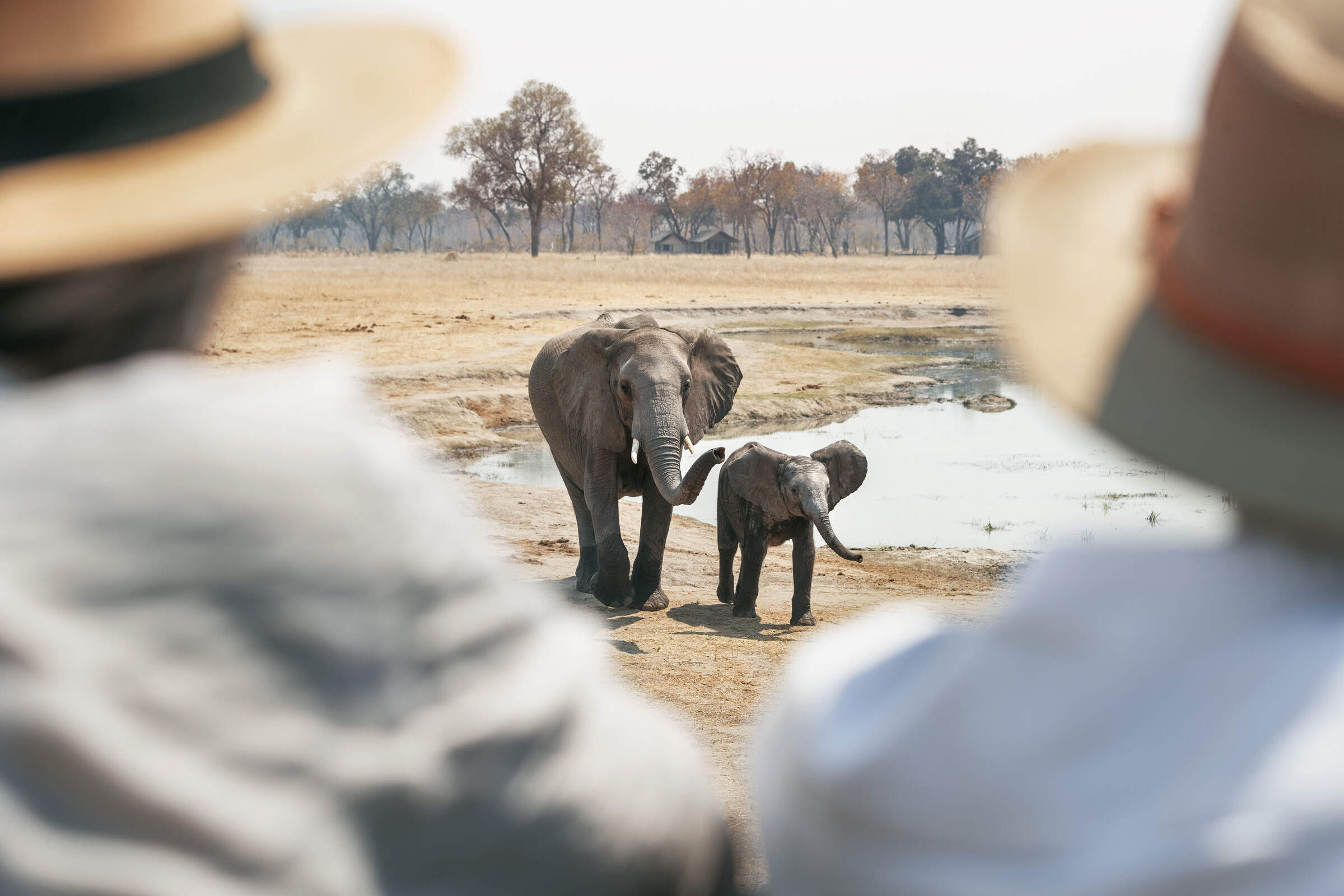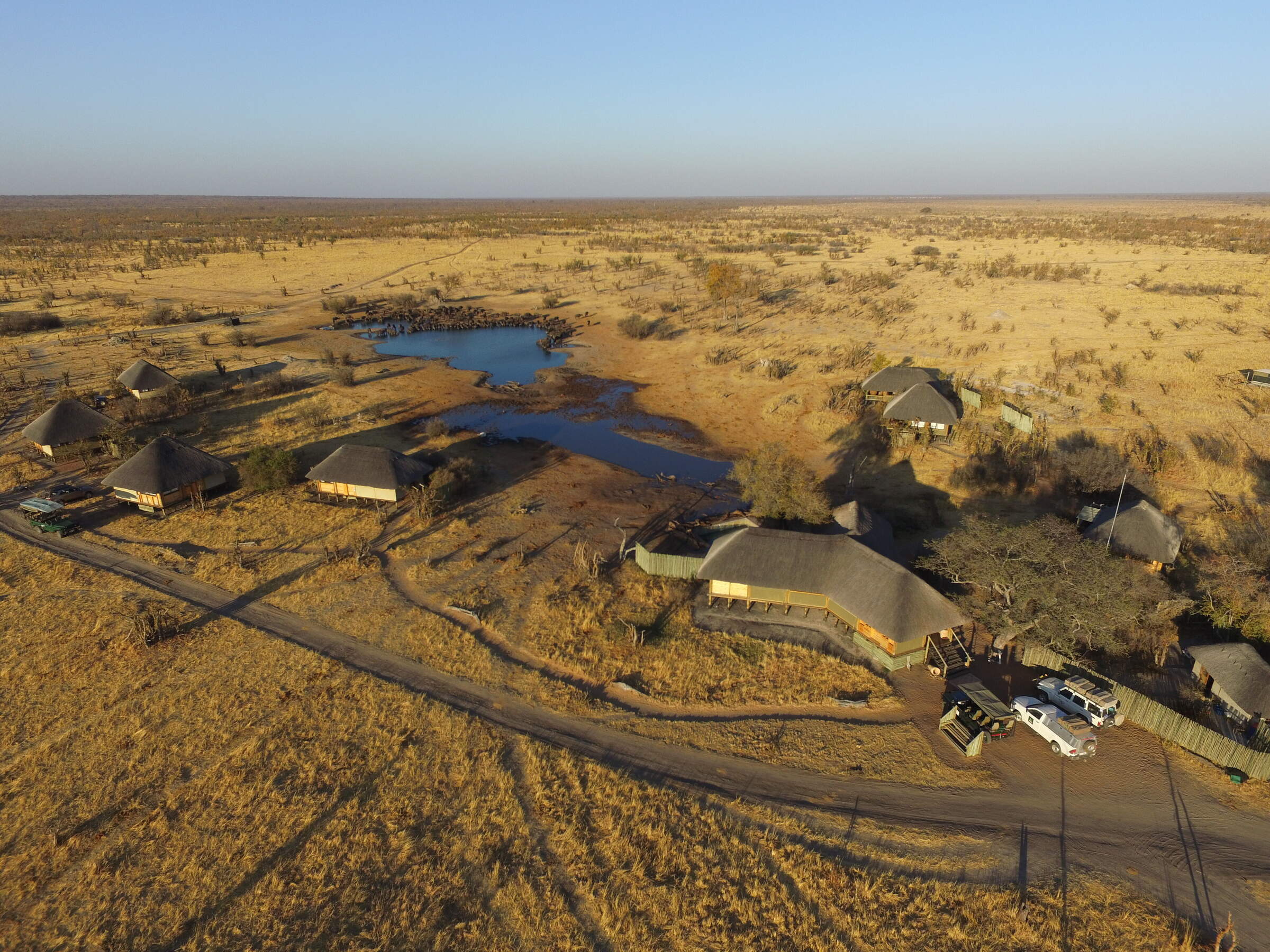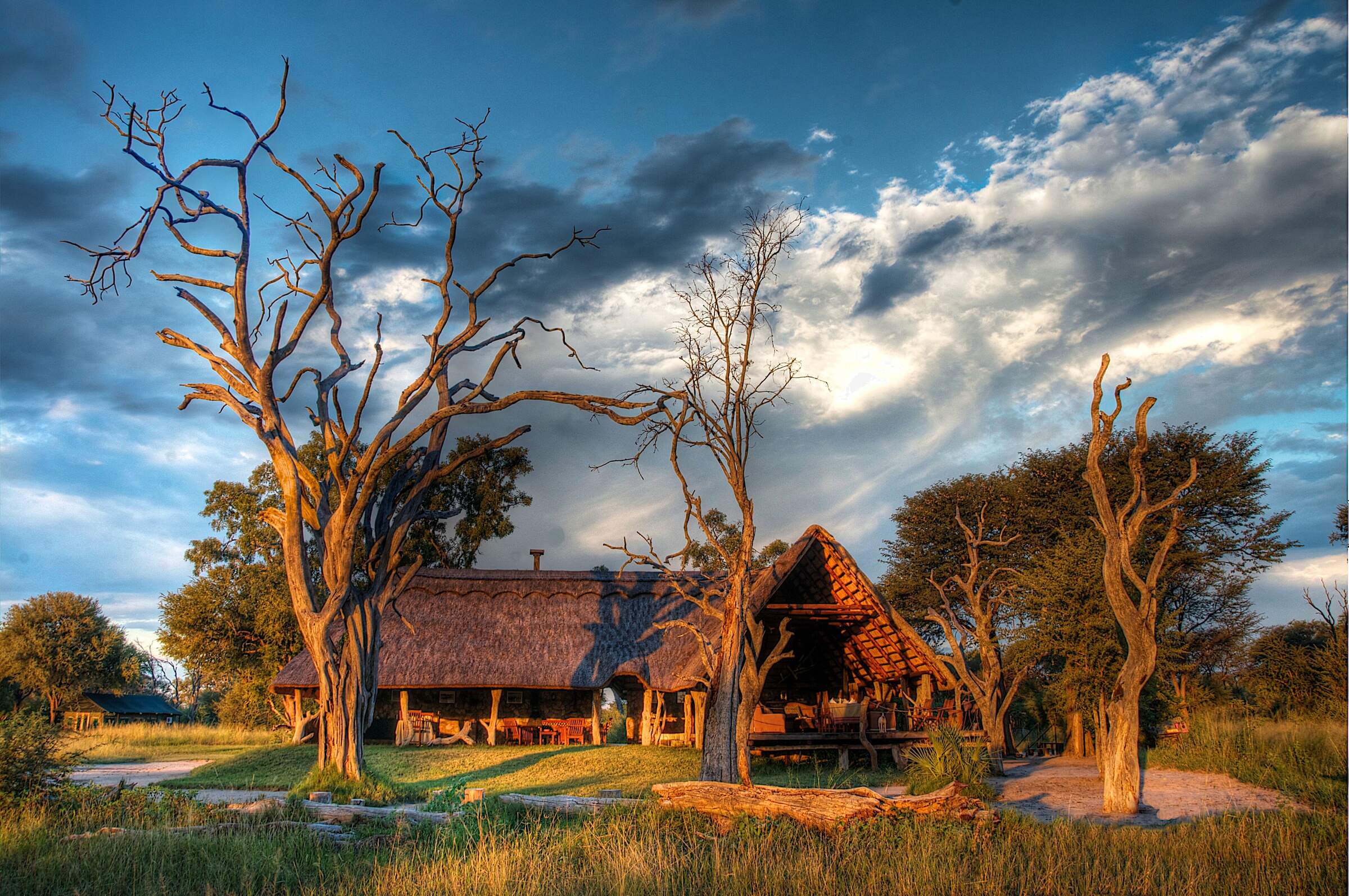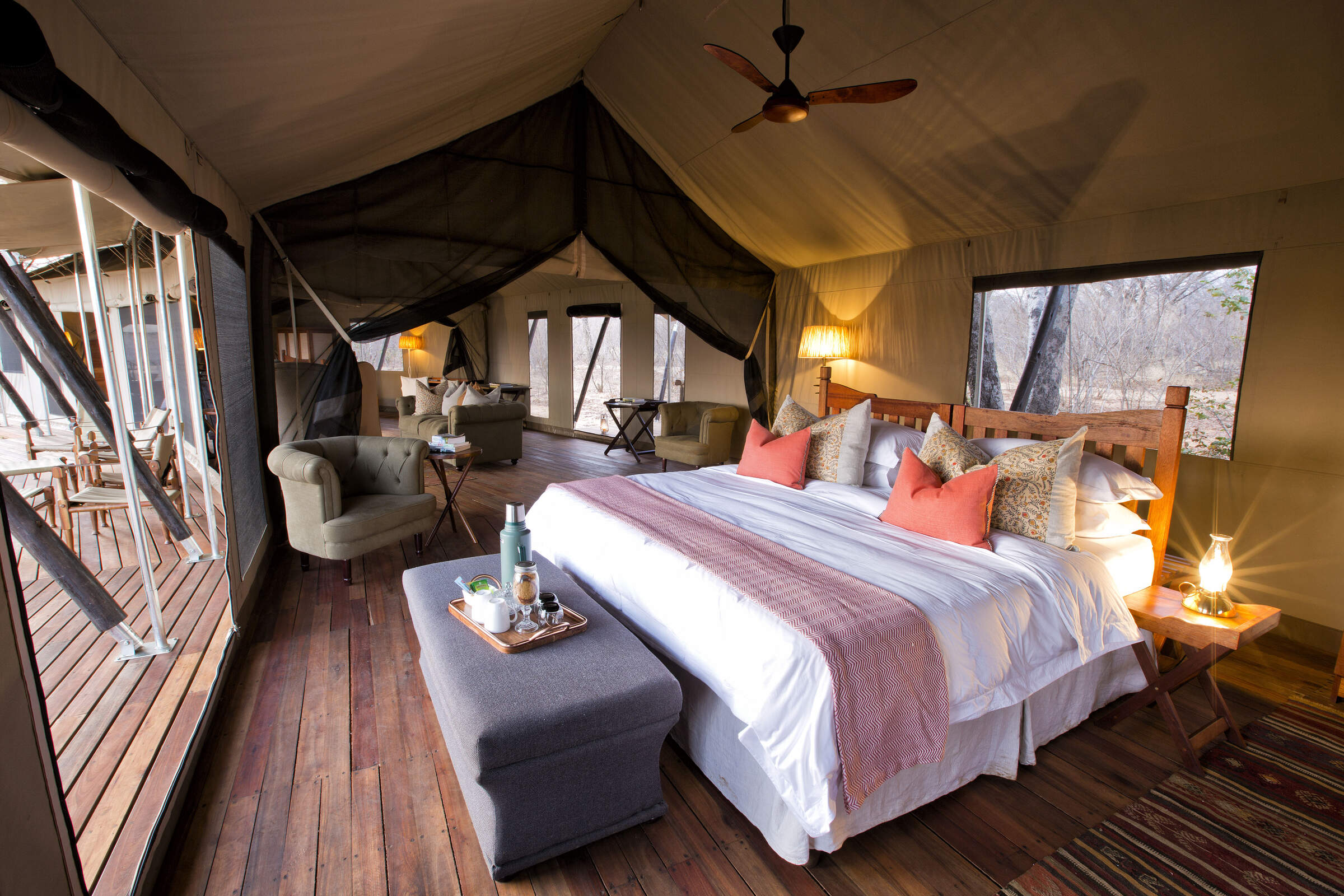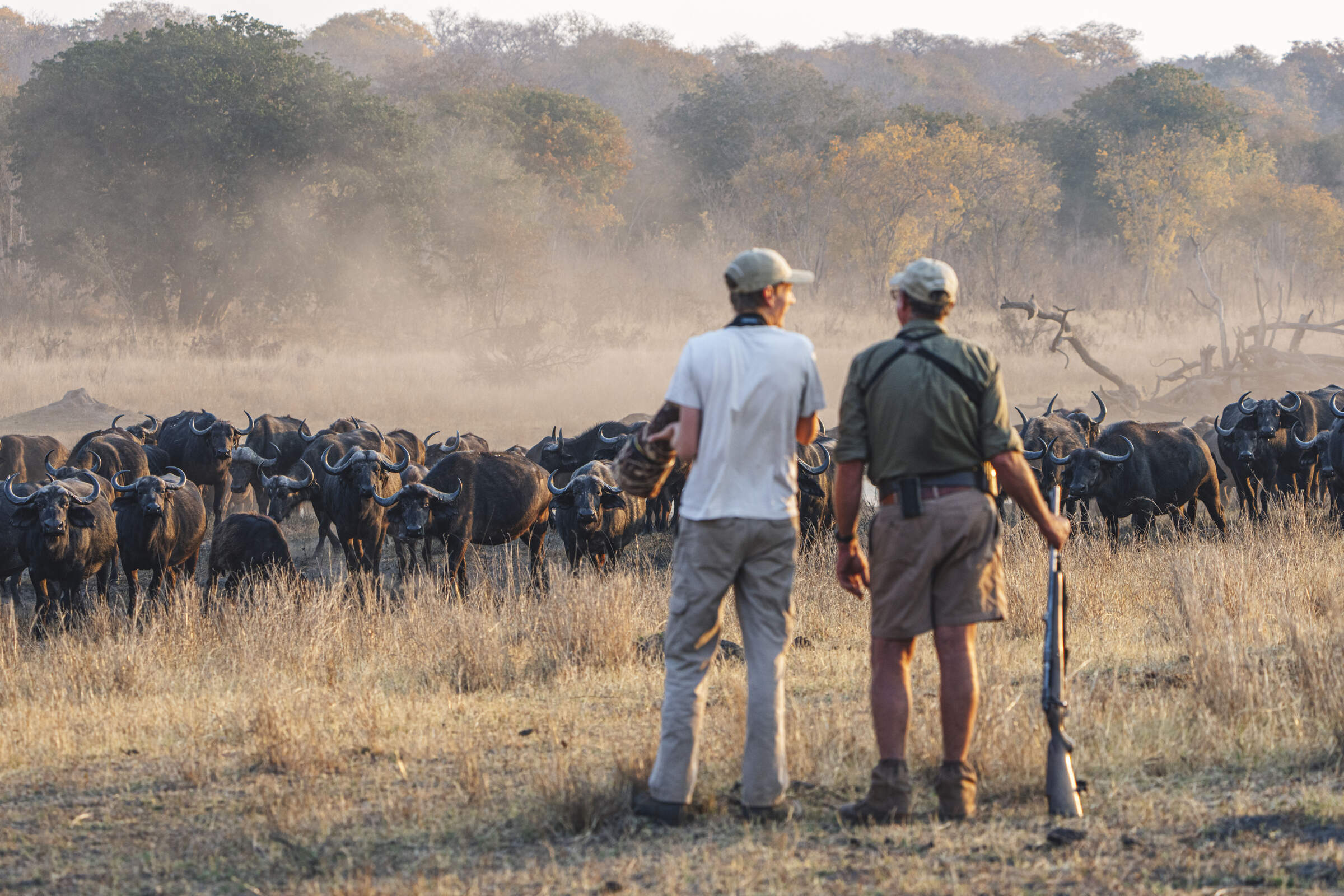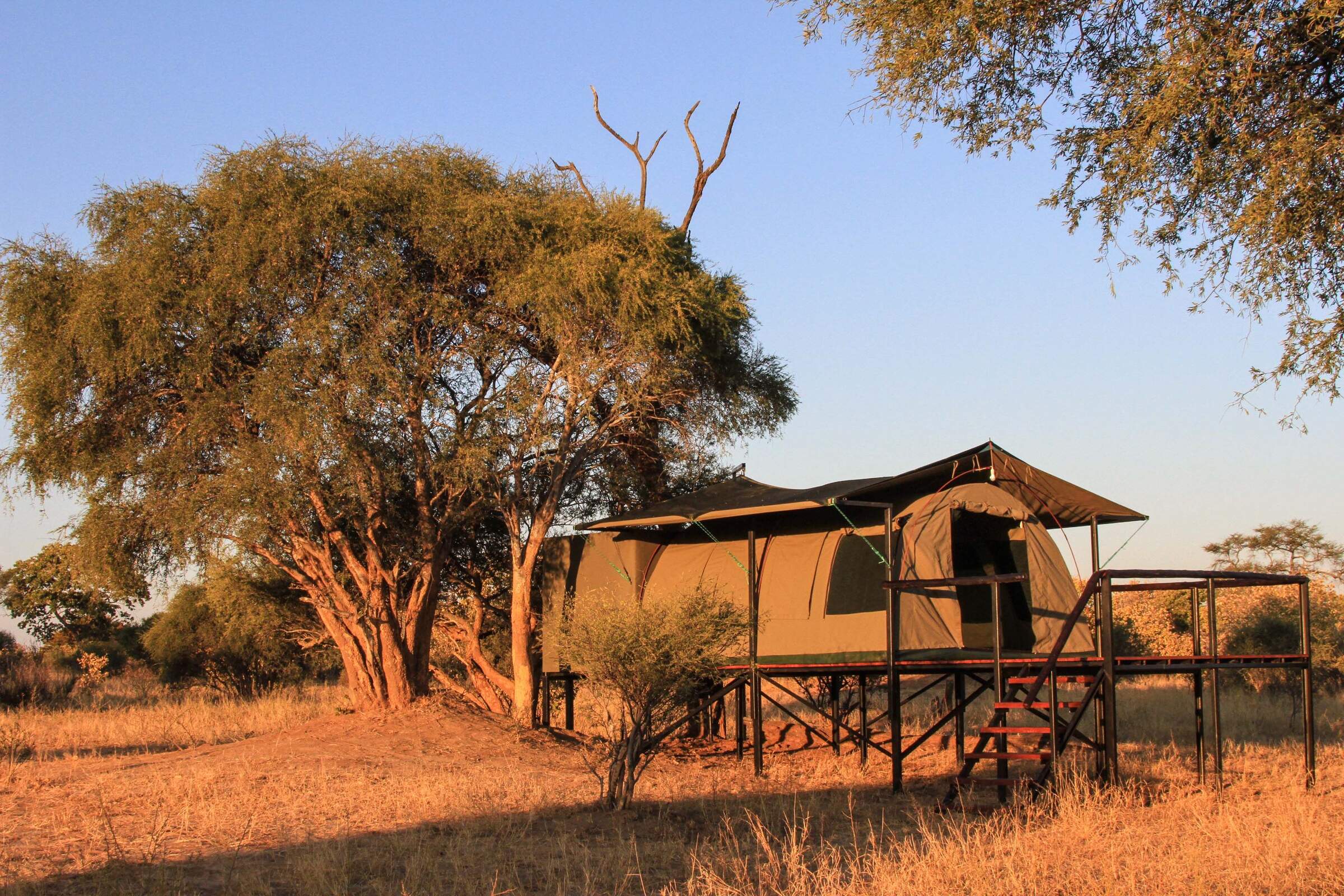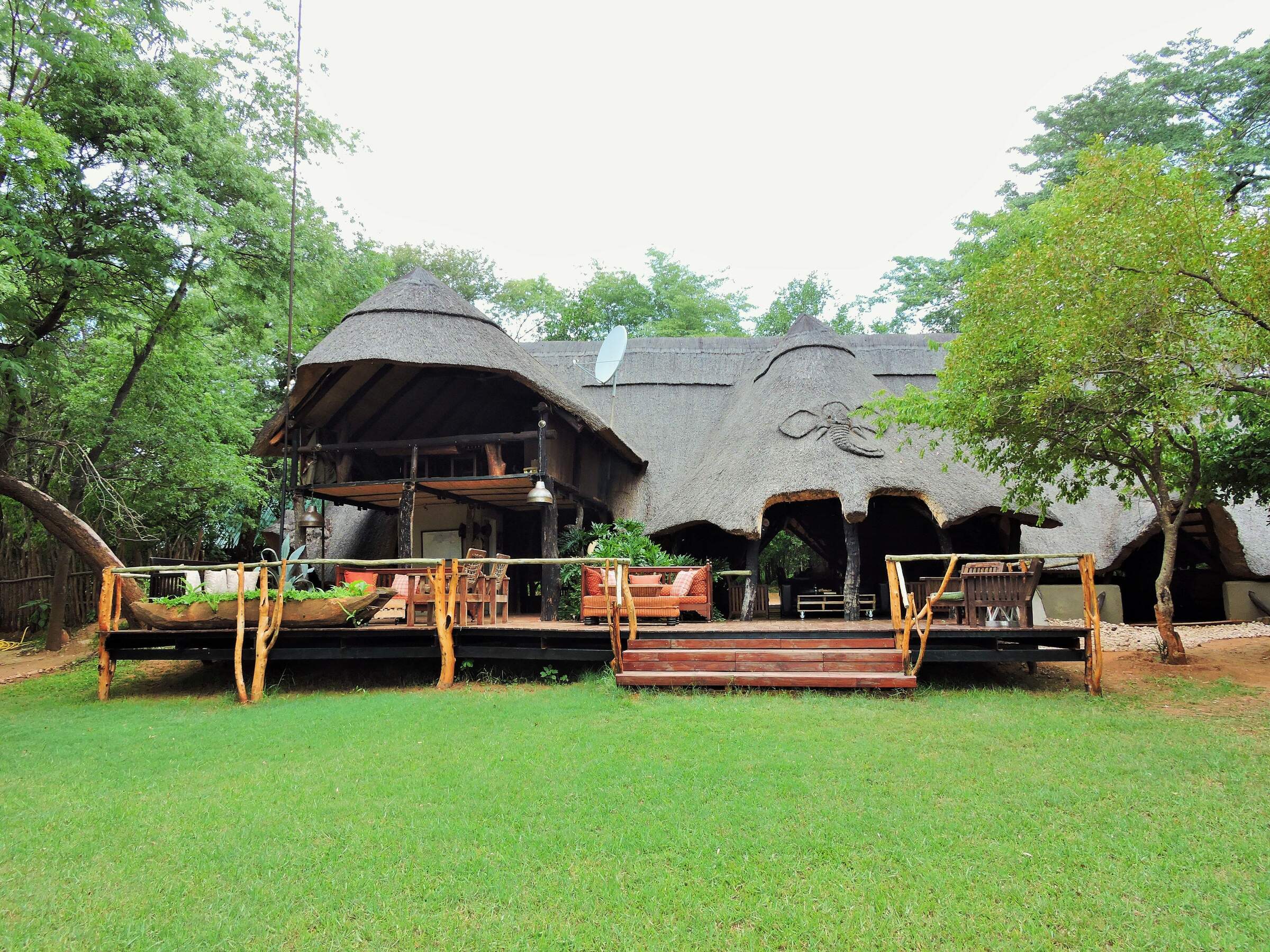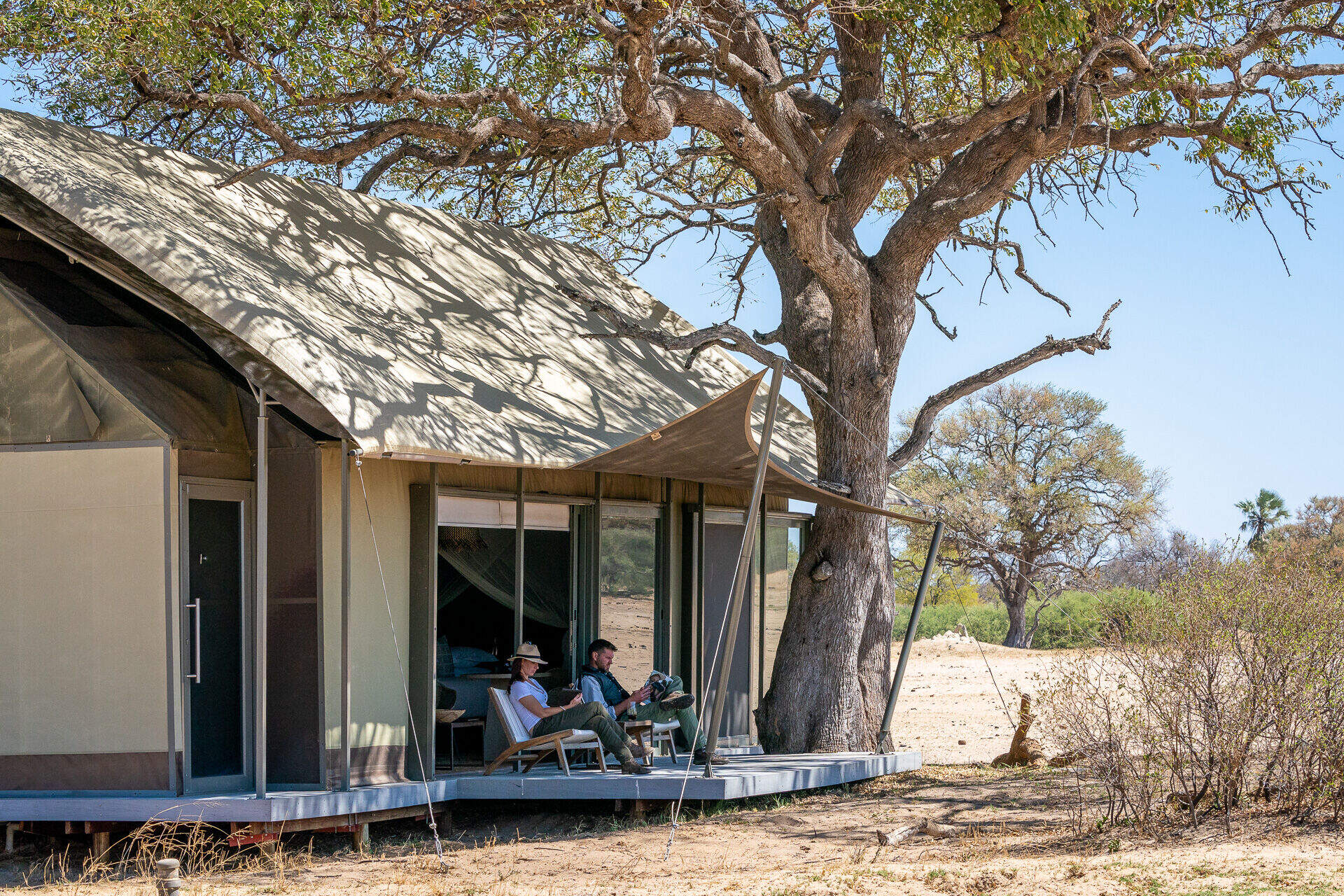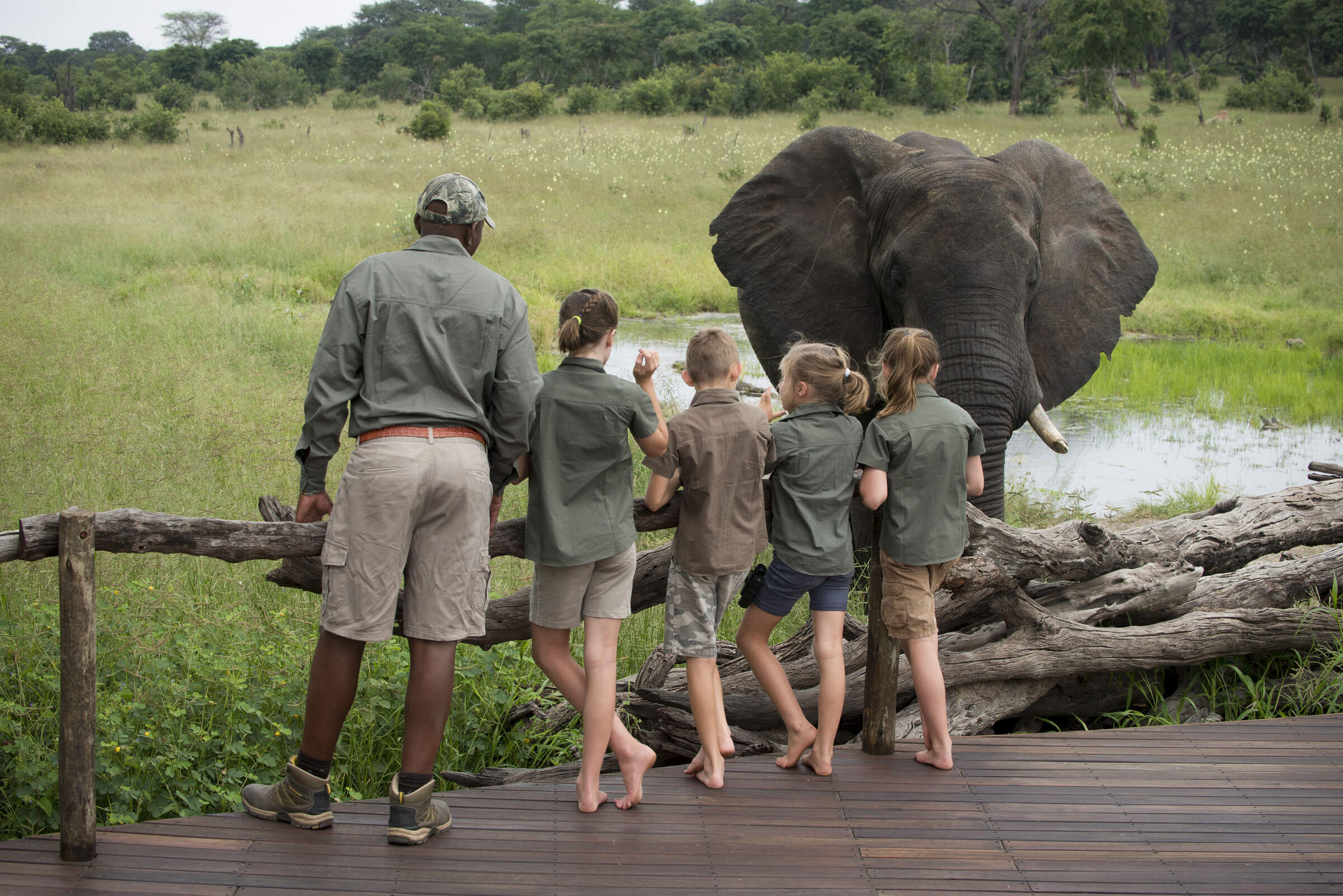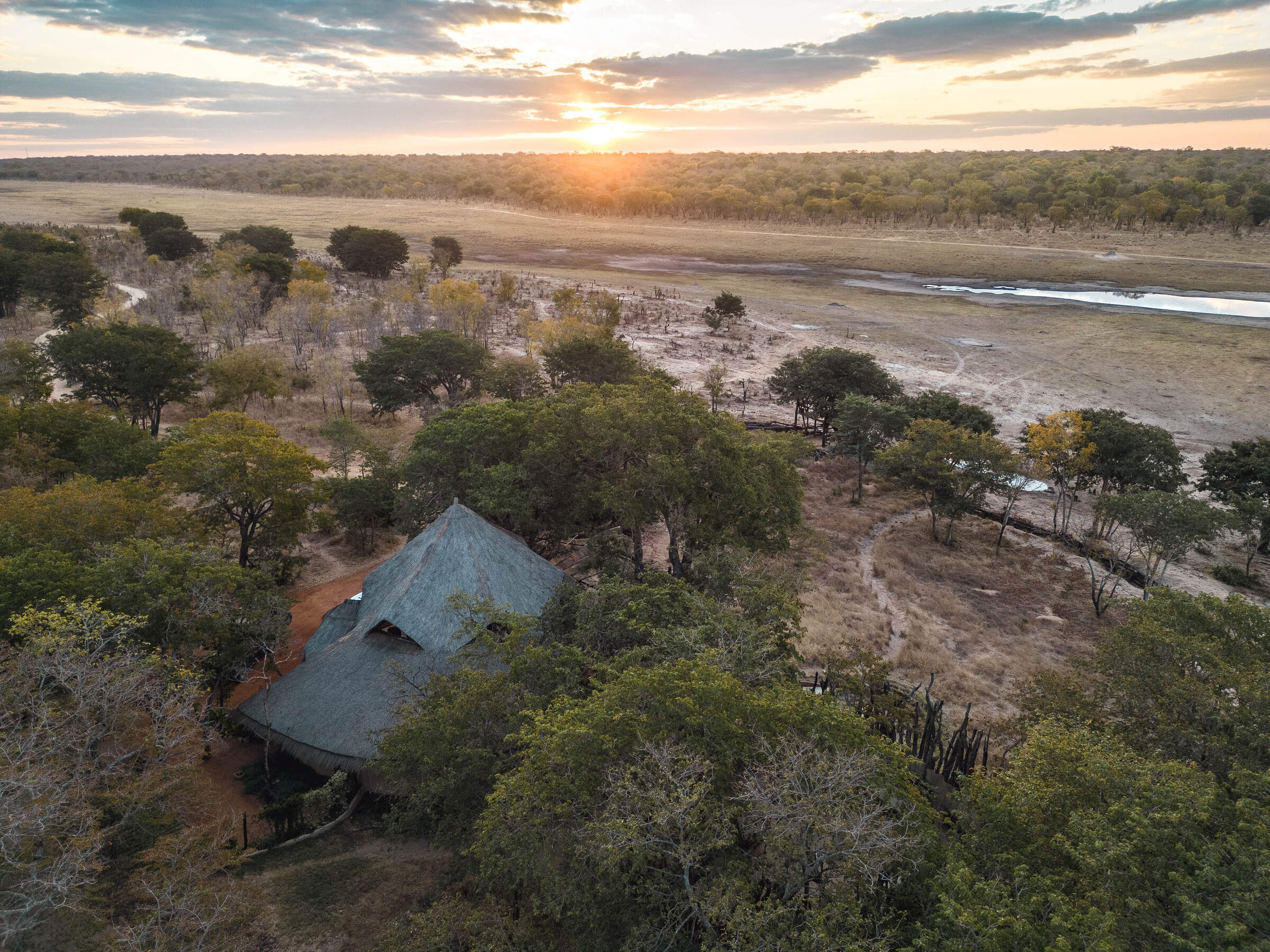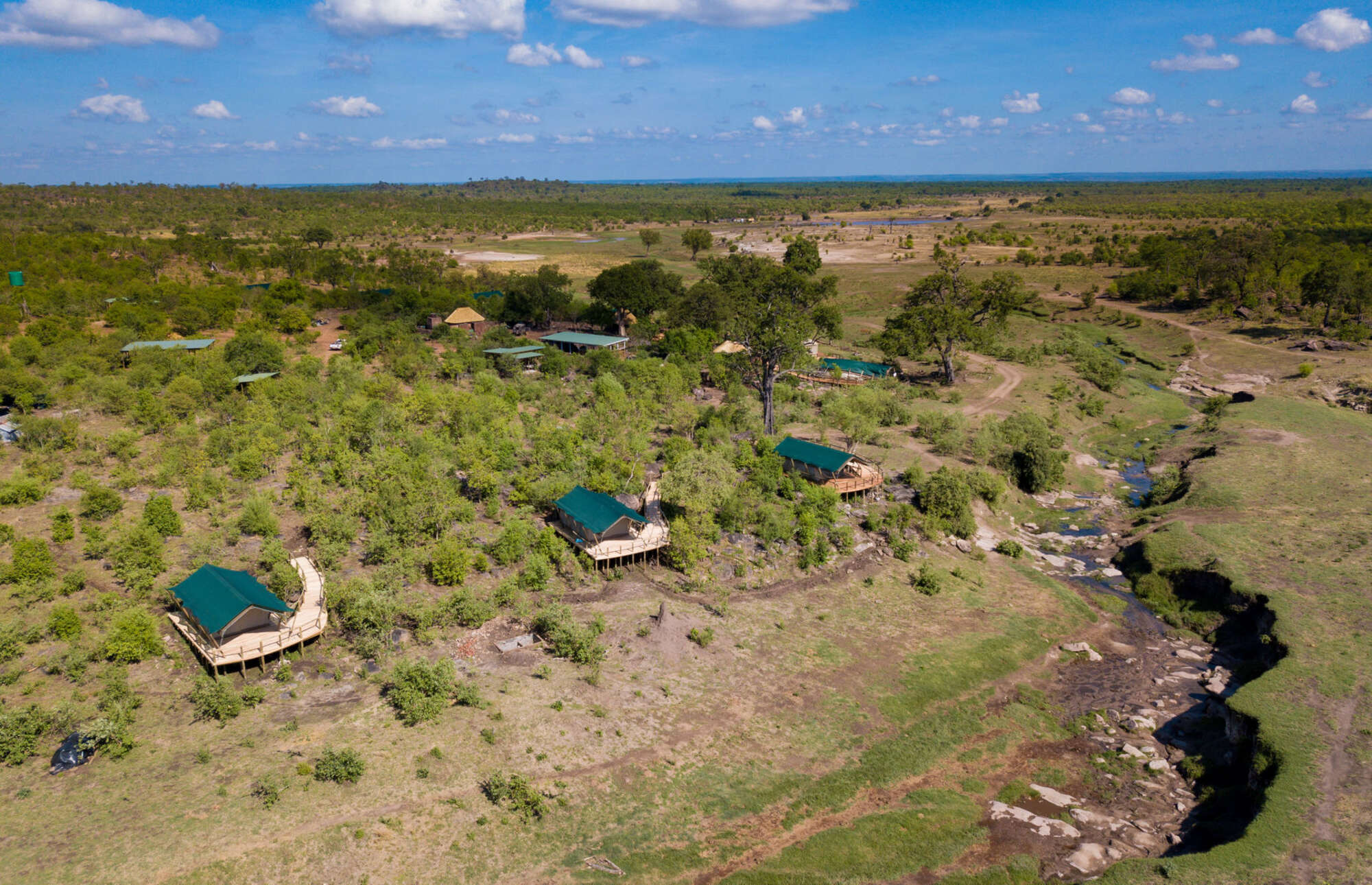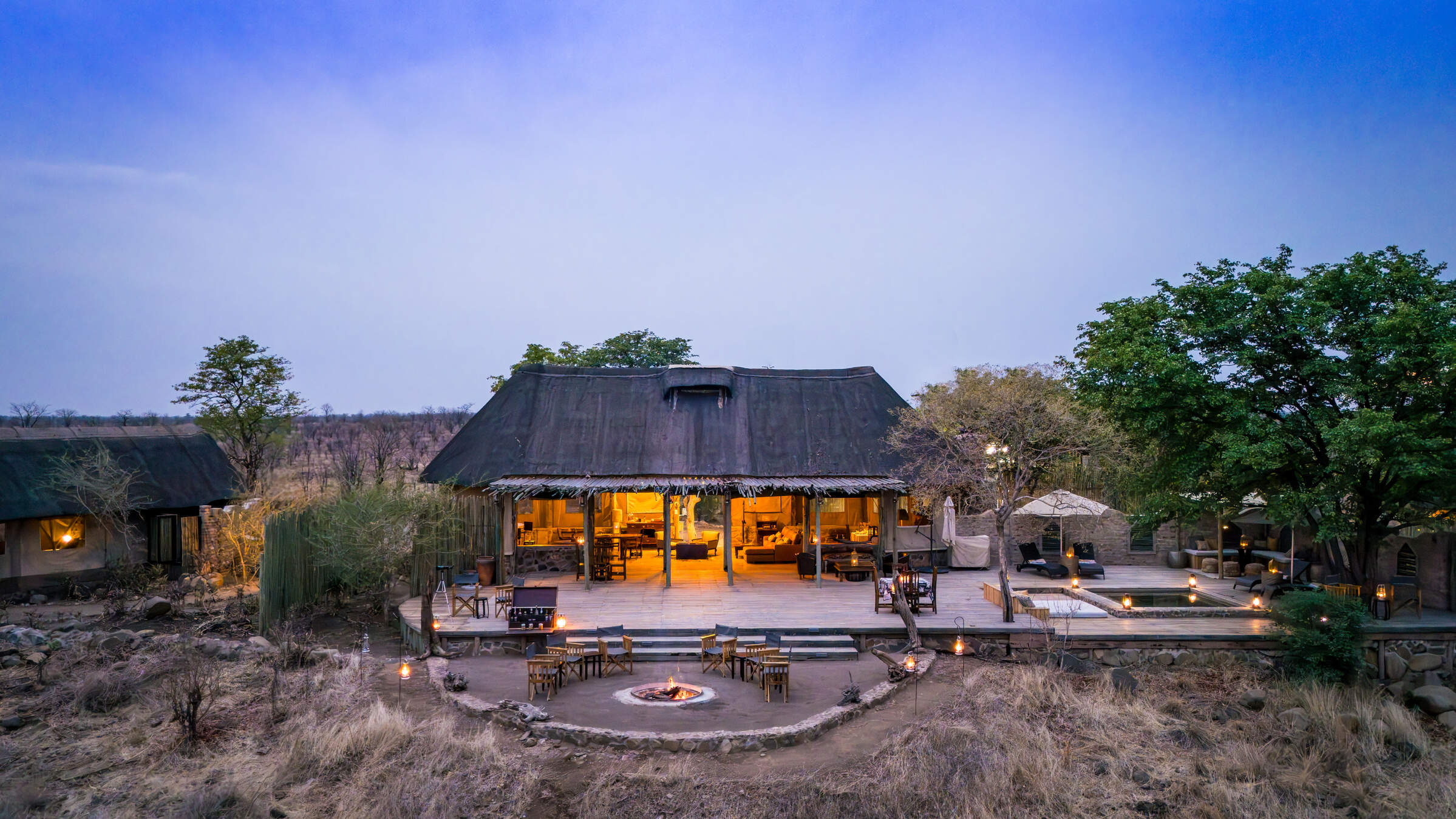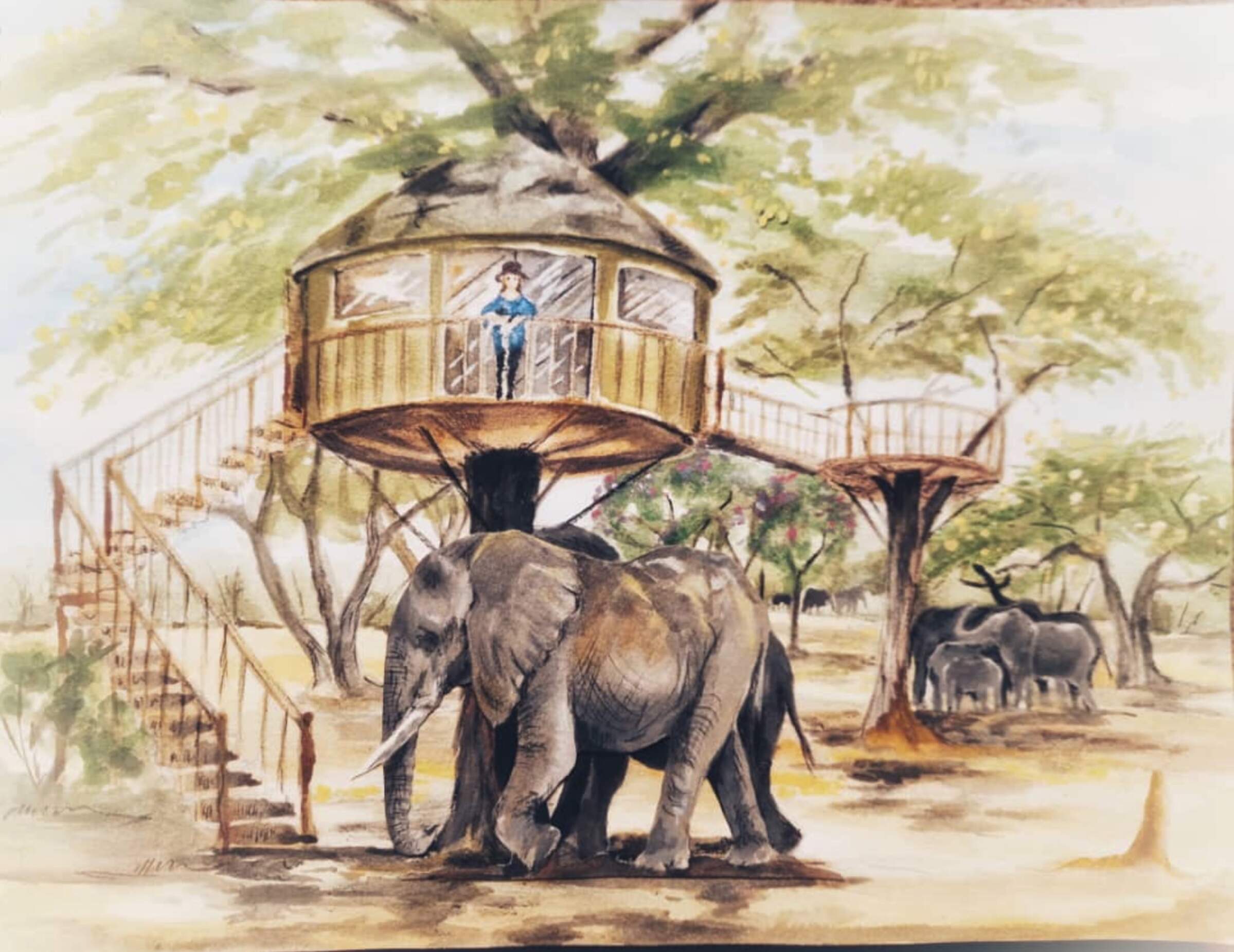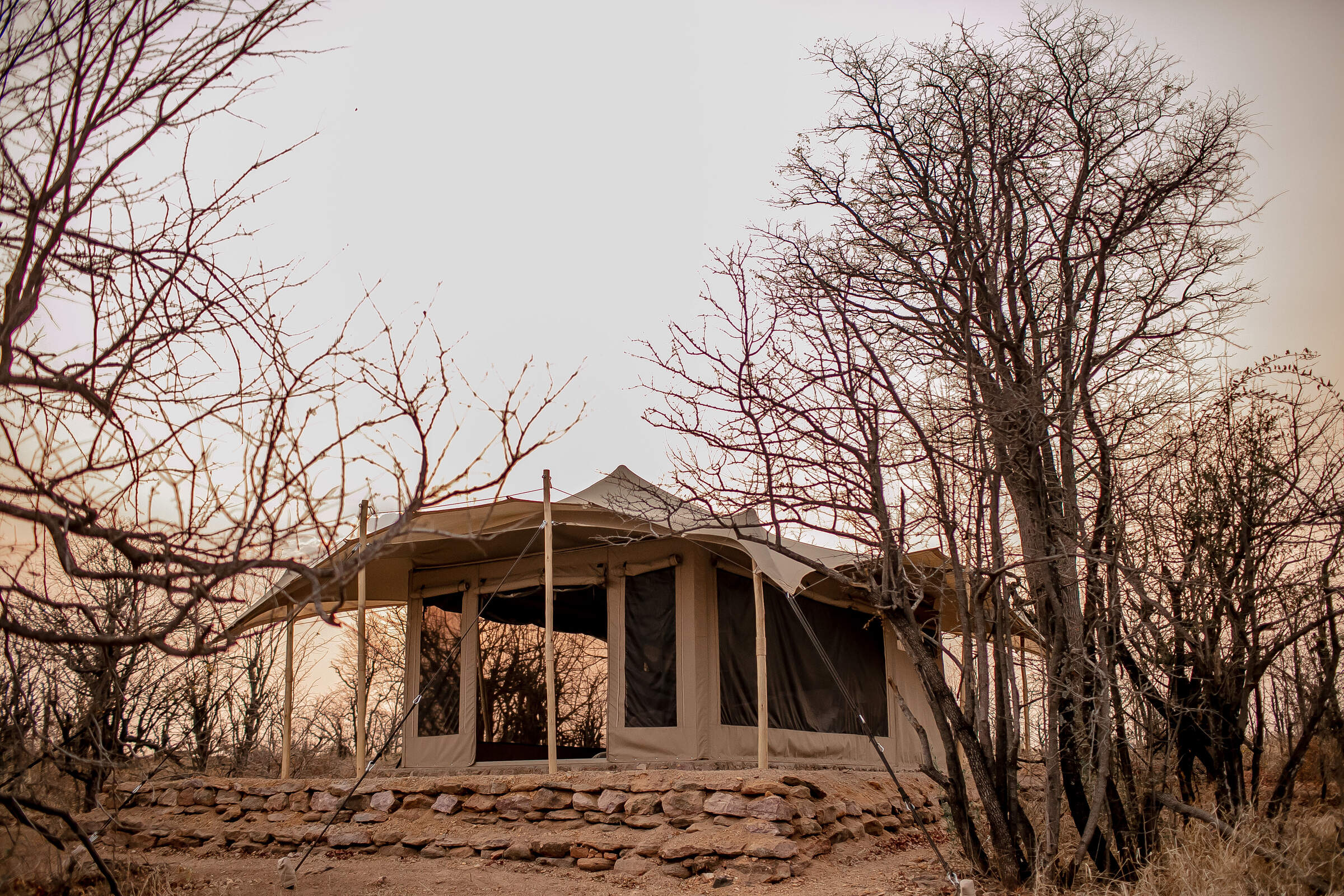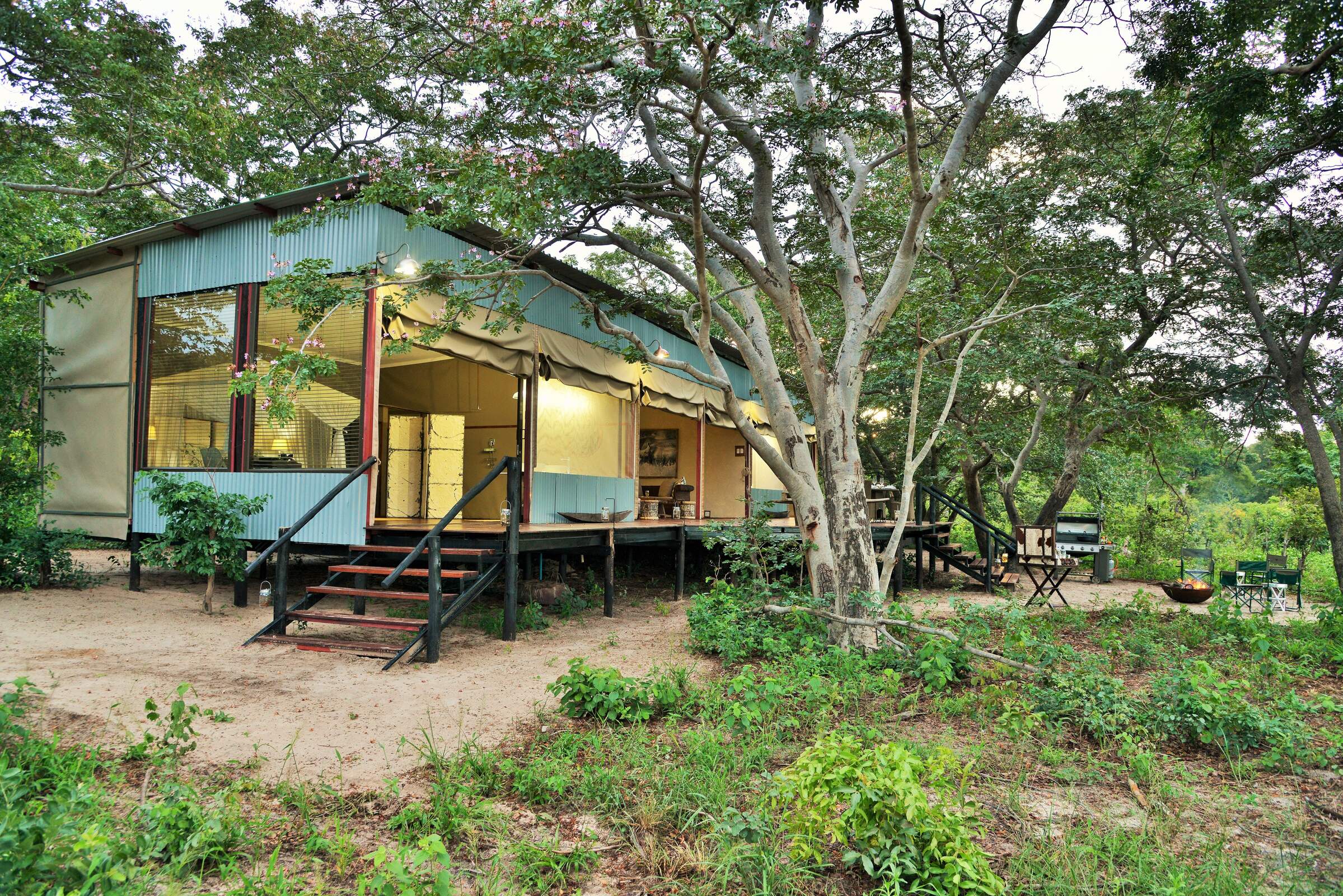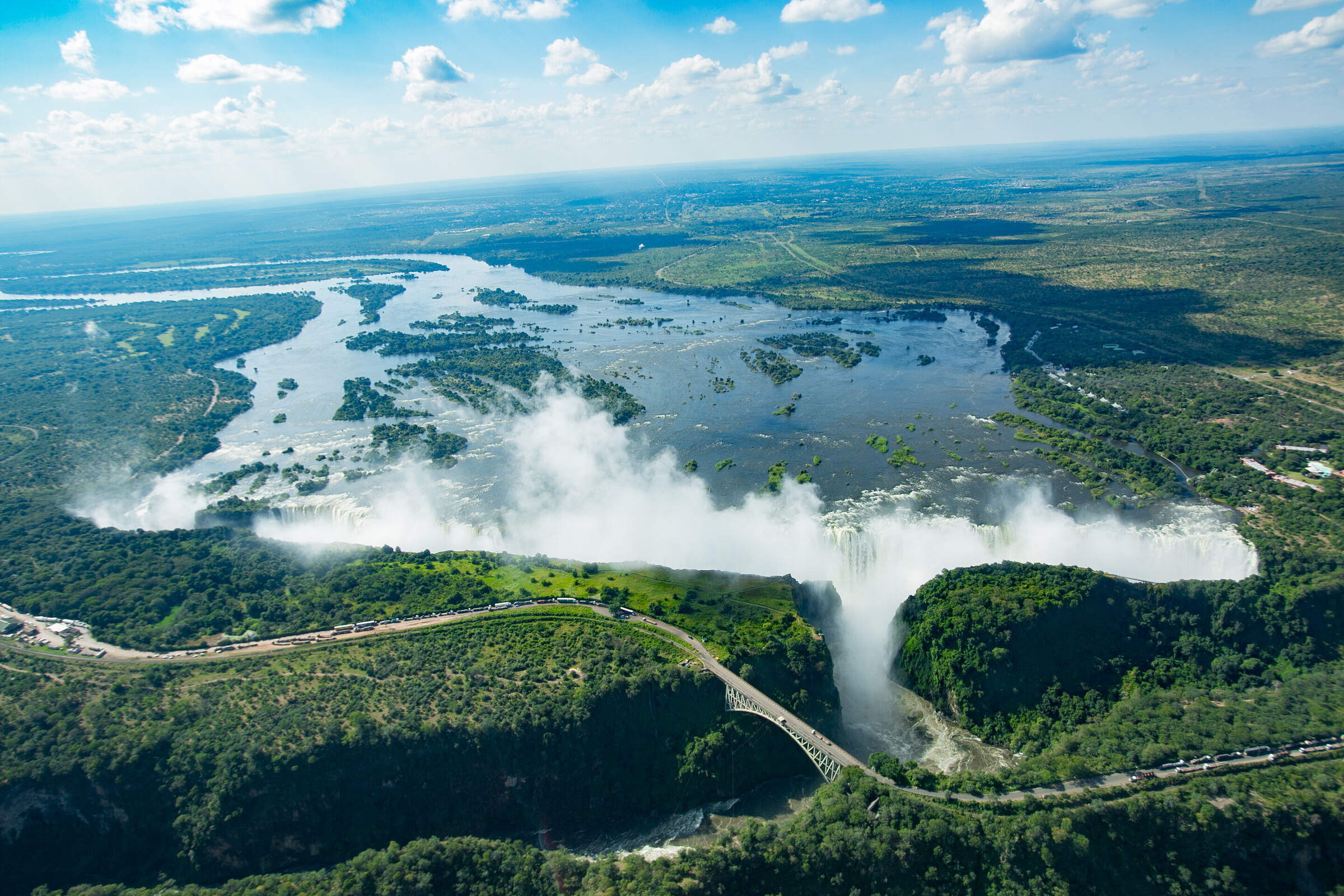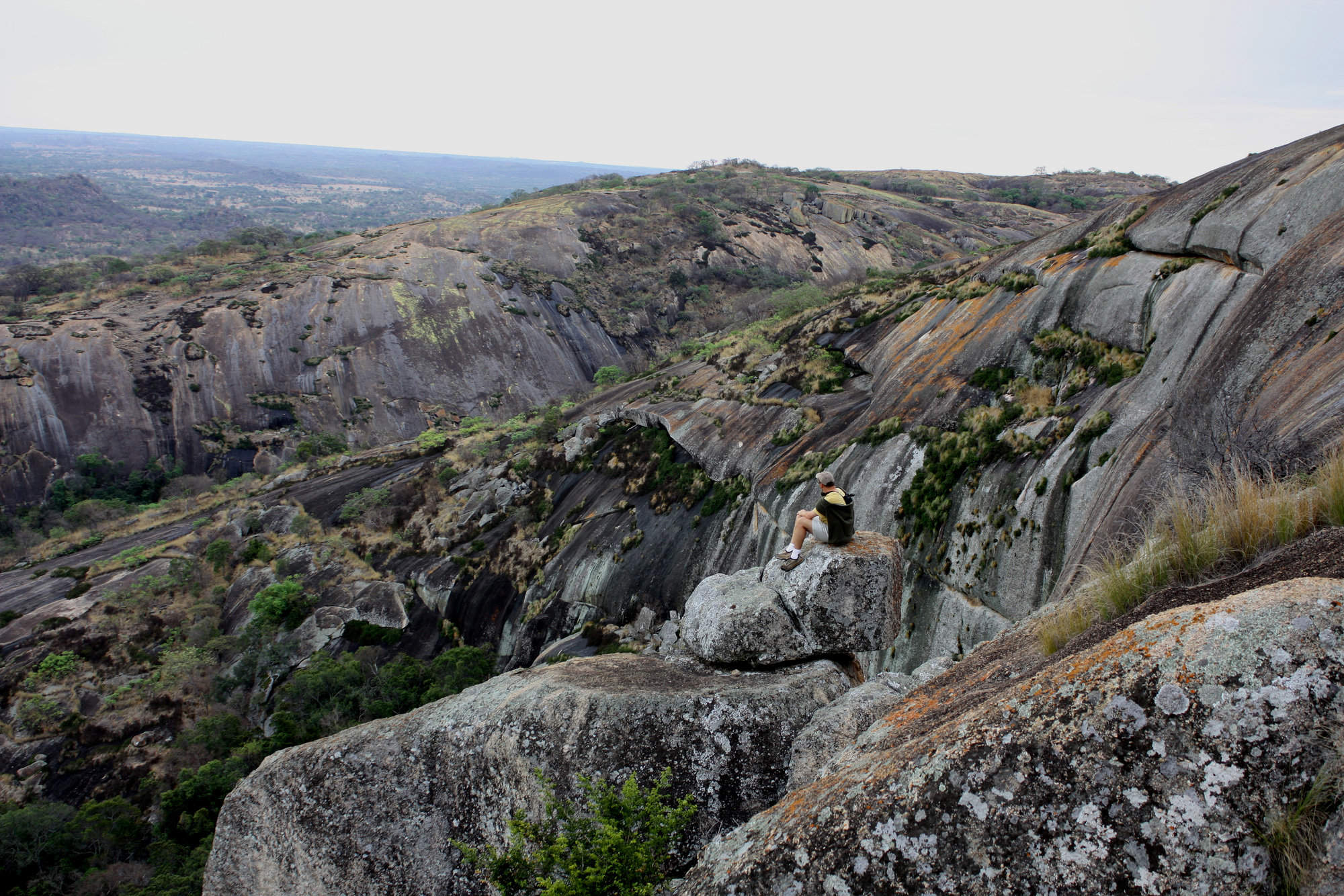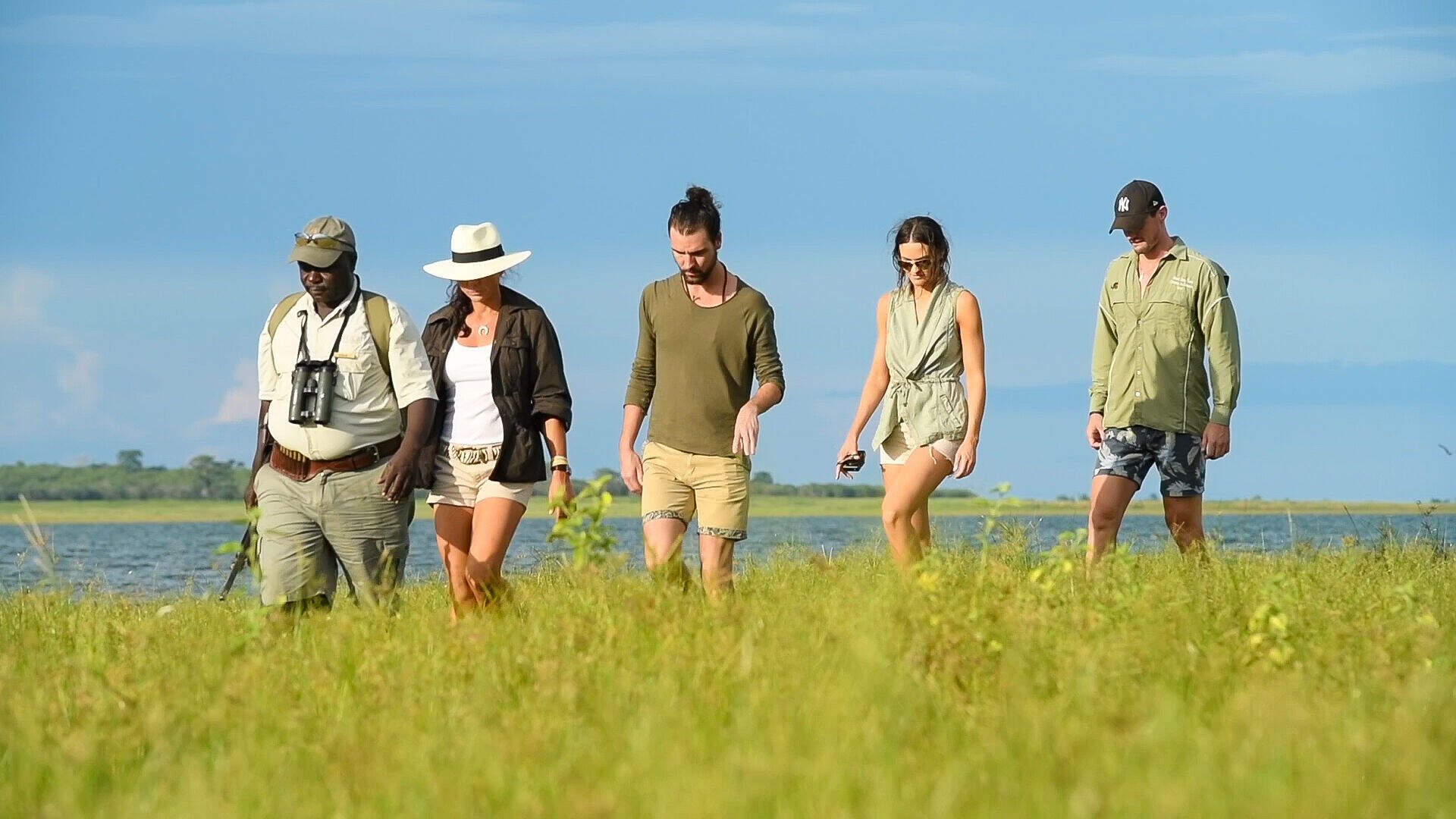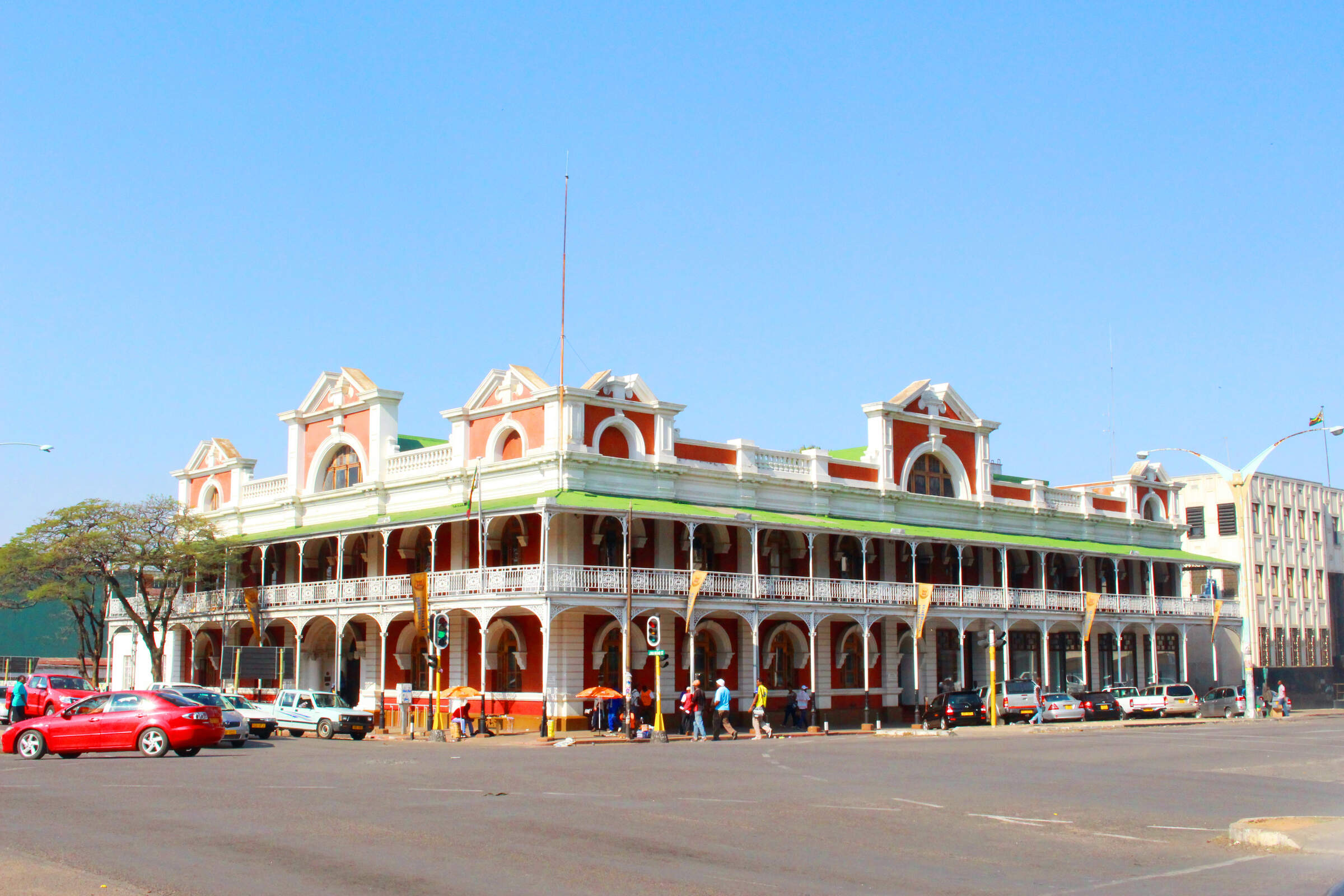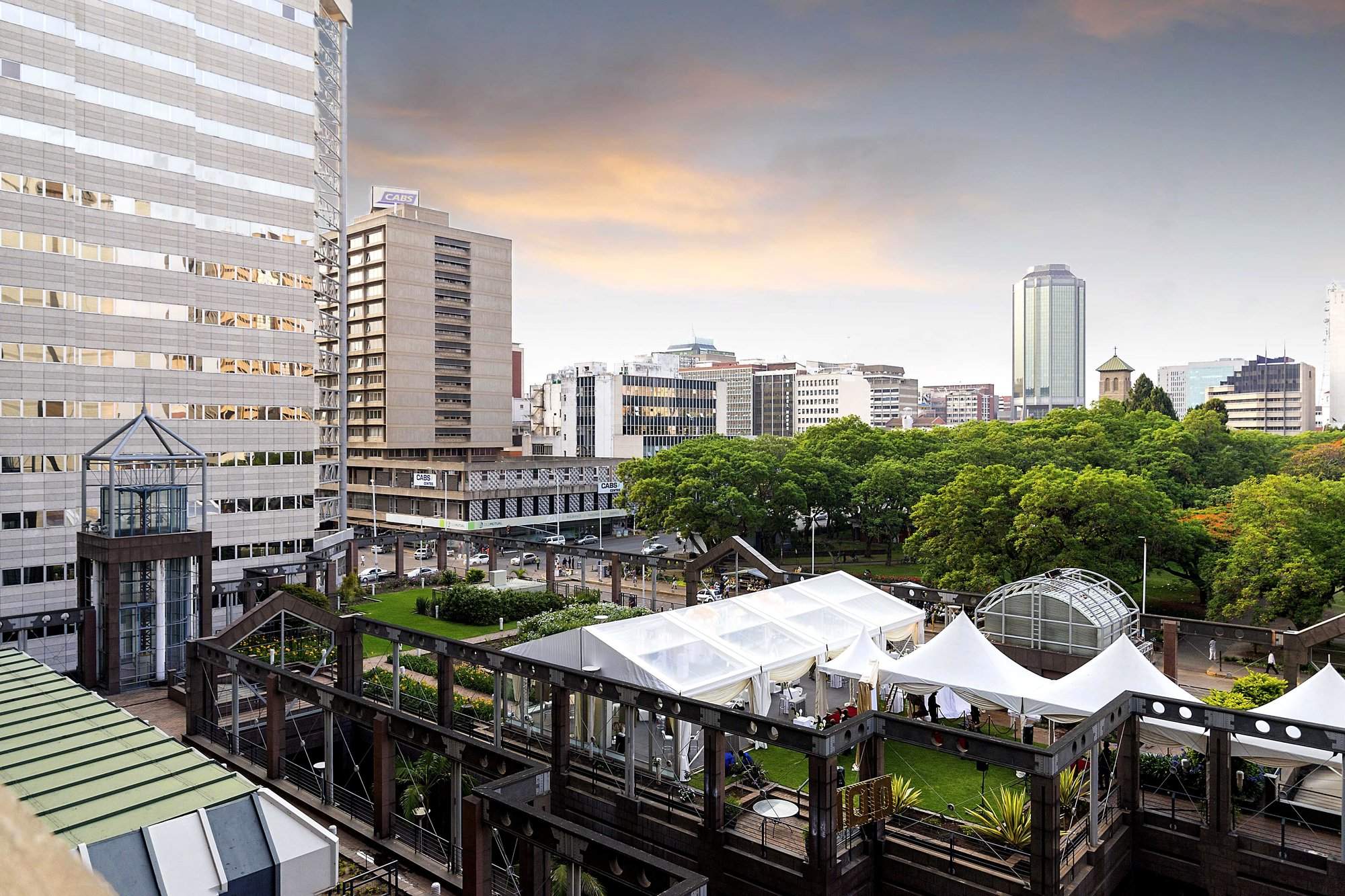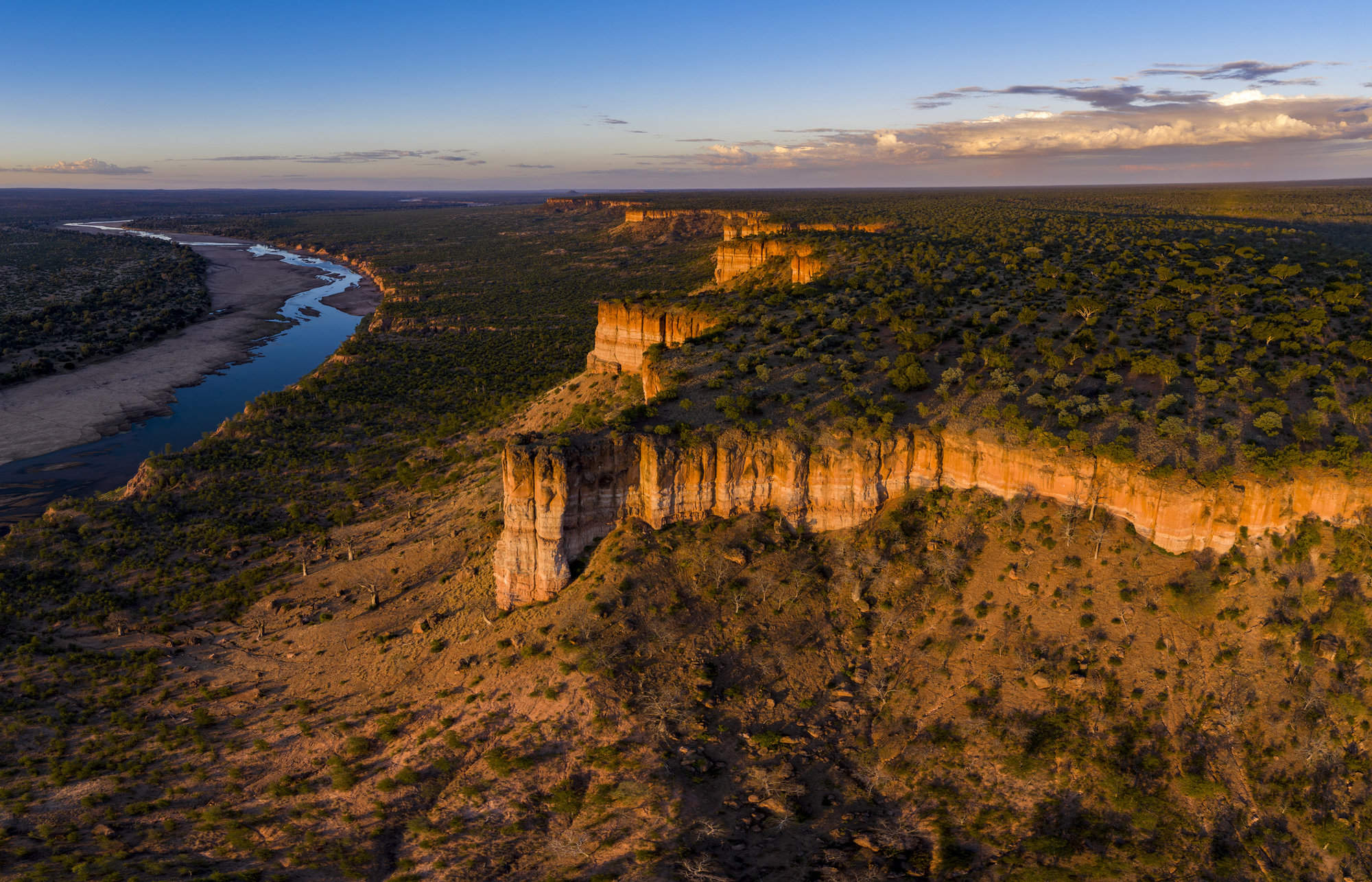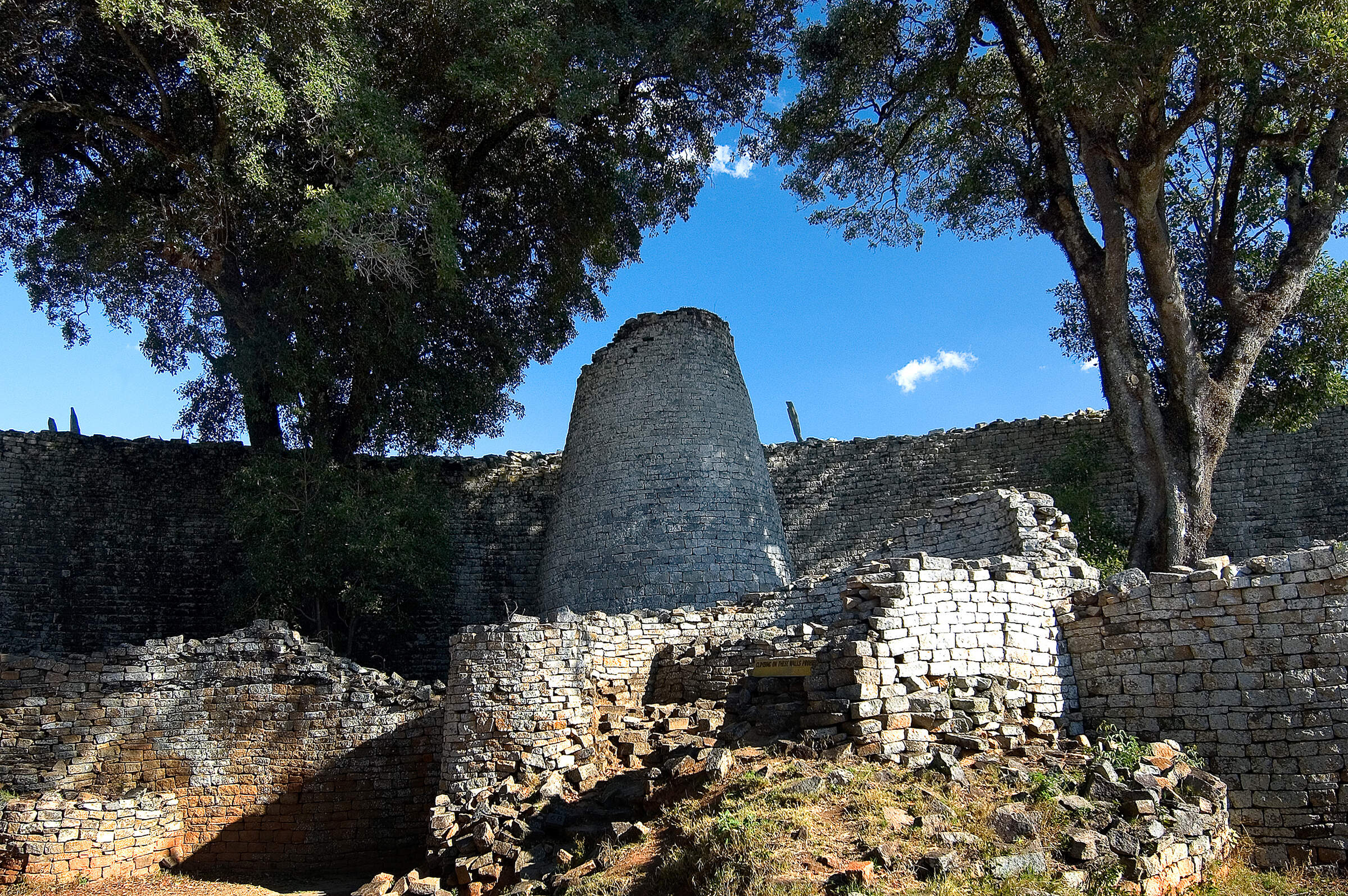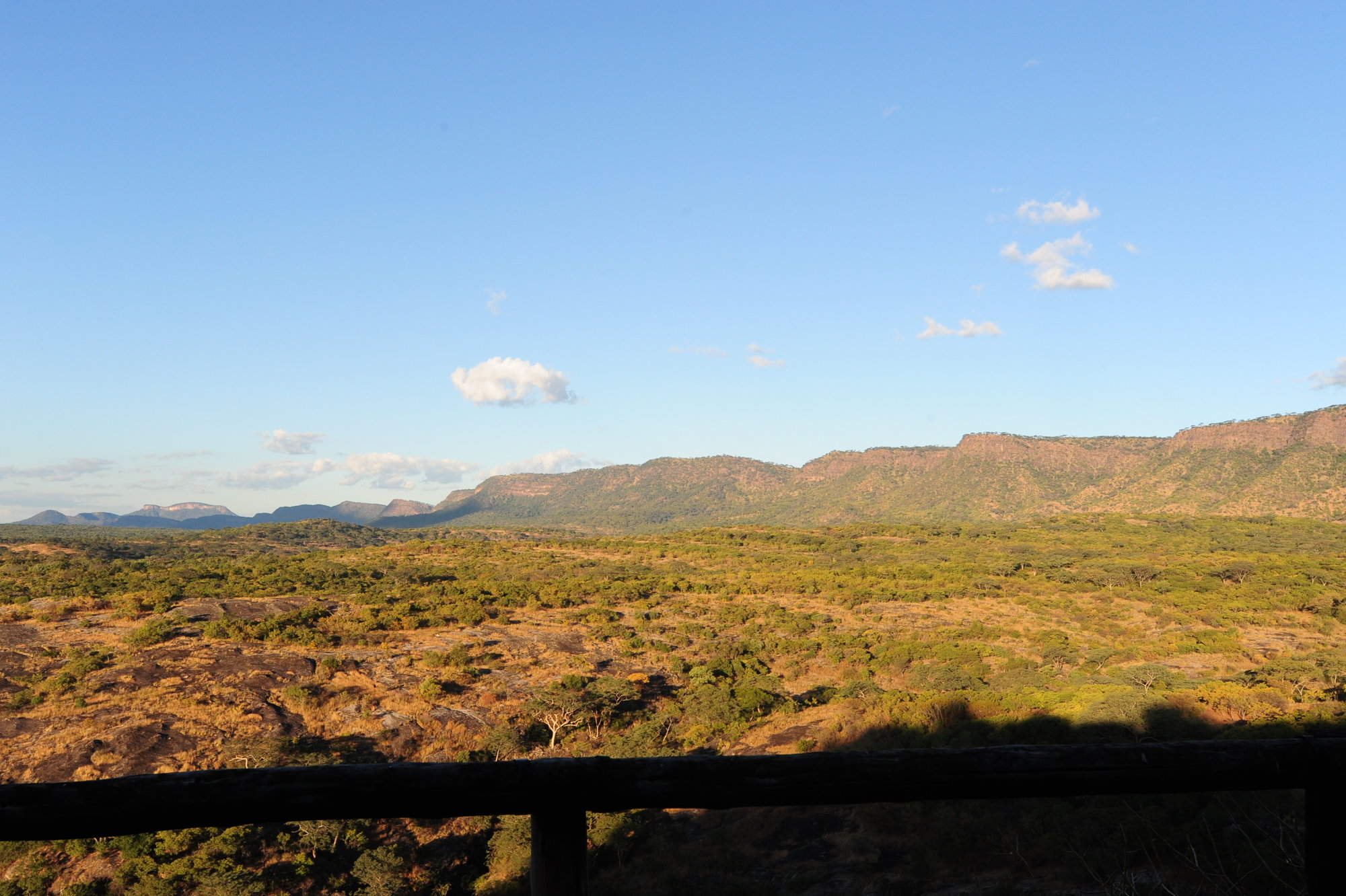Little Makalolo Camp: Our full report
Overlooking a waterhole regularly frequented by wildlife, Little Makalolo Camp sits in a teak forest in the ...
... eastern region of Zimbabwe’s Hwange National Park. It's a small, traditional-style camp in a remote and private concession area, making the game viewing relatively exclusive.Not to be confused with Makalolo Plains Camp, which is now used solely for groups, Little Makalolo has a couple more sister properties within its large relatively exclusive concession within Hwange: the simpler, more rustic Davison’s Camp and the smarter and more luxurious Linkwasha Camp.
Little Makalolo has just six tented chalets all connected to the main area by slightly raised wooden walkways. Each chalet is a very airy, timber-framed structure with mesh windows that allow a breeze to flow through during the day, and roll-down canvas flaps that shield against the cold, wind and rain when necessary.
The chalets are simple but tastefully decorated with a variety of authentic wood and brass fittings adorning the walls and tables. Concrete flooring helps to regulate the temperature during the day while a good spread of rugs adds warmth at night. Large double-doors at the front of each chalet open onto a veranda, shaded by a wooden slotted-frame ceiling beneath a canvas roof. Two metal chairs give good views through a clearing towards the waterhole, and a tree stump serves as a novel table.
Inside, each chalet is dominated by a large double or twin beds, but you will also find a fan, and a writing table that looks out onto the surrounding bush. The en-suite bathroom is separated from the bedroom by a brick partition wall enlivened by black-and-white prints of Hwange’s wildlife. The bathroom itself is complete with indoor and outdoor showers, his and hers copper washbasins and a flush toilet set in an adjoining cubicle with canvas walls.
Behind the scenes, solar power plays an important role at Little Makalolo. Each of the chalets has a modern solar unit, which combines thermal rods for heating water with photovoltaic cells for charging the chalet's electricity storage cells. Apart from the environmental benefits that this brings, it also helps to enhance the aesthetic value of the camp, as it minimises the need for a noisy generator.
Shortly after our last visit in November 2017, there were plans to renovate the main area, whose lounge area was furnished with comfortable seating and chairs, and a small library complete with magazines, books and board games. In the adjacent open-sided dining area, with its large communal table, guests can help themselves to tea and coffee throughout the day.
An outdoor firepit surrounded by chairs proved a popular gathering place for guests to warm themselves with a hot drink around the fire first thing in the morning, or perhaps with something stronger before or after dinner. Little Makalolo also has a small plunge pool with some deck chairs that provides a great place to cool off during the hot afternoon.
Safari activities from Little Makalolo Camp centre around 4WD game drives and walking safaris with top professional guides. Game drives take place in the morning, beginning early, stopping for coffee mid-morning and returning in time for brunch. Guests on a morning walk depart around sunrise, normally being driven out of camp for about 15 minutes before a two–three-hour walk, and returning in time for brunch. On a previous stay during a fascinating walk with our guide, we were excited to find black rhino tracks early on and although we didn't spot the rhino itself, the tracking was great fun. We also managed to get within 100m of a loan male sable antelope before it noticed us and dashed off into thicker bush.
Evening 4WD safaris begin in the late afternoon and stop for sundowners before using a spotlight on the return to camp. On the same visit to Little Makalolo we came across a huge herd of buffalo and watched as a pride of lion, just visible on the edge of the treeline, began to move towards the herd; sitting in the pitch black as the buffalo became increasingly aware of the lion's presence was an unforgettable experience. The next morning we returned to find an old male had fallen prey to the lions and every member of the pride, from cubs to adults, was eating its fill.
There are also many hides and waterholes in the Makalolo area, including a “tree-house” hide above a waterhole at the front of Makalolo Plains Camp, and a “'log-pile” hide beside the waterhole in front of Little Makalolo. This can seat up to four people (including your guide) and allows you to get very close to wildlife (particularly elephants) at the waterhole. On one visit to Little Makalolo, we were sprayed with mud by an elephant that was only a few metres away – very exciting!
About 90 minutes' drive from Little Makalolo, just outside the national park, is the small town of Ngamo where there are two community-run schools. The owners of Little Makalolo are heavily involved in community projects to try and improve the lives of children in this area, illustrating the positive impact that tourist dollars are having on the people of Zimbabwe. Guests at Little Makalolo can visit the town and see some of these projects, which include a borehole to provide children and teachers with fresh drinking water, the re-thatching of school buildings, and the provision of basic first-aid kits and health care. Such visits are of course completely optional and are usually run in place of usual wildlife watching activites, but may provide an interesting change of scenery for those who would normally see only the wildlife of Hwange, and little of the local people.
Our view
Little Makalolo does a great job of combining high standards of service with quality facilities, enhancing the canvas construction of a classic bushcamp with welcome contemporary features. Its activities are varied and its guides highly professional; walking in this area is a highlight not to be missed.
Geographics
- Location
- Hwange National Park, Zimbabwe
- Ideal length of stay
- We would recommend Little Makalolo as a great place to spend 3–4 nights.
- Directions
- Travellers can reach Little Makalolo by road or air. The road transfer from Victoria Falls takes 3–4 hours and includes considerable time on a game drive within Hwange National Park. Alternatively, take a light aircraft to Makalolo airstrip followed by a short 4WD drive to camp.
- Accessible by
- Fly-and-Transfer
Food & drink
- Usual board basis
- Full Board & Activities
- Food quality
- The food at Little Makalolo is generally of a very good standard, and we were pleased to find this still the case on our visit in November 2017. Most meals are served buffet style around a large table.
In the early morning, a light breakfast of cereals, hot porridge and toast cooked over the fire, as well as tea and coffee, is enjoyed around the campfire before setting off for your first activity of the day.
Brunch is usually served after the morning activity, but on this trip the kitchen prepared us a packed lunch to take with us as we moved to our next camp. On a previous visit we had fish and chips with quiche and a selection of salads.
After a relaxing siesta, high tea consists of both sweet and savoury snacks such as freshly baked chocolate cake and mini pizzas. In the summer months iced coffee or tea are served along with regular coffee and tea.
For dinner, on our return from the evening activity, we had an unusual pear and courgette soup to start, followed by a braai (barbecue) of beef and pork belly served with pap (a traditional staple, rather like polenta), baked potatoes and seasonal vegetables. The meal was finished off with a rich Amarula and white-chocolate mousse. A more typical main course might be along the lines of chicken cordon bleu with butternut squash and roast potatoes, which we enjoyed on a previous visit. - Dining style
- Mixture of group dining and individual tables
- Dining locations
- Indoor and Outdoor Dining
- Further dining info, including room service
- Private dining is available on request.
- Drinks included
- Soft drinks, beers, and most wines and spirits are included in the rates, but high-end liqueurs, champagne and premium wines and spirits are not.
To help reduce the waste of plastic bottles, each guests is supplied with their own water bottle on arrival. This can be refilled with tap water, which is safe to drink here.
Special interests
- Walking safaris
- Little Makalolo's walking guides are fully qualified Zimbabwean professional guides. The exams for this qualification are tough, and the guides that qualify usually have excellent bush skills – knowledge that allows for some great walking safaris in Zimbabwe.
- See ideas for Walking safaris in Zimbabwe
- Wildlife safaris
- The waterhole in front of Little Makalolo is a real focus for game, including elephants for much of the day and night. Makalolo's private area within Hwange has strong populations of big game, too, with lion and leopard seen regularly, and cheetah – although scarce – also present.
- See ideas for Wildlife safaris in Zimbabwe
Children
- Attitude towards children
- Little Makalolo Camp welcomes children aged seven years and over. Note, however, that the camp usually insists that guests with children under 16 hire a private vehicle for game drives at extra cost.
- Property’s age restrictions
- Little Makalolo Camp welcomes children aged seven years and over. Children under the age of about 16 are unlikely to be allowed on walking safaris.
- Special activities & services
- None
- Equipment
- The camp doesn't have any cots, high-chairs or special equipment for children.
- Generally recommended for children
- We don't recommend Little Makalolo Camp for children under the age of about 16. Activities for youngsters at the camp, between guided safari activities, are very limited.
- Notes
- This is an open safari camp and dangerous animals are likely to pass through; children must be supervised by a parent at all times.
Our travellers’ wildlife sightings from Little Makalolo Camp
Since mid-2018, many of our travellers who stayed at Little Makalolo Camp have kindly recorded their wildlife sightings and shared them with us. The results are below. Click an animal to see more, and here to see more on our methodology.

100% success

100% success

100% success

100% success

100% success

100% success

100% success

90% success

90% success

60% success

50% success

50% success

38% success

22% success

13% success

11% success

0% success

0% success
Communications
- Power supply notes
- As with any lodge relying on alternative energy sources, the electricity supply isn't always constant – although they do have high-quality, modern, efficient solar panels. The lights in the chalets use low-energy bulbs.
There is no facility for charging batteries and other equipment in the chalets, but – depending on the levels of the main lodge batteries – they can usually be charged in the main dining area, where there is a range of international adaptors. - Communications
- There's no cellphone reception or WiFi at Little Makalolo, but the camp does have a satellite phone in case of emergency.
- TV & radio
- There are no radios or TVs here.
- Water supply
- Borehole
- Water supply notes
- All chalets have hot and cold running water and flush toilets.
Health & safety
- Malarial protection recommended
- Yes
- Medical care
- Some staff have basic training in first aid. The nearest doctor is in Hwange Town or Victoria Falls and can be accessed by air in an emergency.
- Dangerous animals
- High Risk
- Security measures
- Guests are escorted back to their chalets after dinner. Guides and managers sleep on site at all times.
- Fire safety
- Fire extinguishers are provided in each chalet and in various locations around the camp.
Activities
4WD Safari
Birdwatching
Guided walking safari
Night drive
Private activities
Sleeping under the stars
Extras
- Disabled access
- On Request
- Laundry facilities
- There is a complimentary laundry service included – which usually takes 24 hours – although for cultural reasons, women's underwear isn't accepted. Washing powder is provided for guests who wish to wash these items themselves.
- Money
- Each chalet has a safe bag, where guests can place their valuables and take them to the office to be locked in the camp safe.
- Accepted payment on location
- Money isn't usually needed in camp, as most things are included in the cost. We recommend that you tip in US dollars if possible, and there is a communal tip box for this purpose. Check to see if your guide is tipped separately.
Other lodges in Hwange National Park
Alternative places to stay in this same area.
